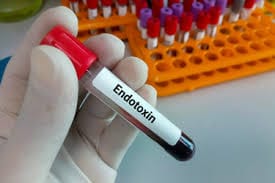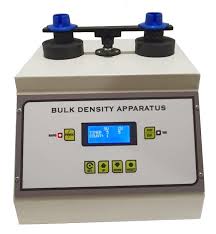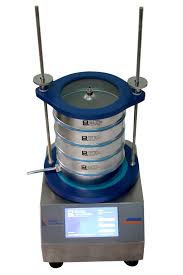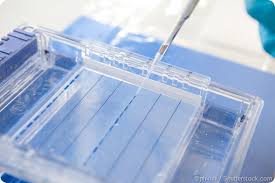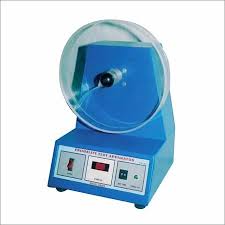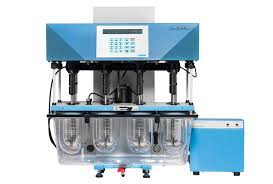|
Getting your Trinity Audio player ready... |
Q4B Annex 8(R1) Sterility Test General Chapter
1. Introduction: Sterility Test
Sterility Test : The following document is part of the Q4B process concerning the Sterility Test General Chapter. It outlines the outcome and implementation guidance for harmonized sterility testing procedures across different pharmacopoeial standards. The proposed texts and guidelines are submitted by the Pharmacopoeial Discussion Group (PDG), which includes major pharmacopoeias such as the European Pharmacopoeia (Ph. Eur.), Japanese Pharmacopoeia (JP), and United States Pharmacopeia (USP).
2. Q4B Outcome
The Q4B process is designed to evaluate and harmonize test methods across different pharmacopoeial standards to ensure they are suitable for global use in the pharmaceutical industry. This section covers the key points of the outcome from the Q4B Expert Working Group (EWG) evaluation.
2.1 Analytical Procedures
Based on the expert group’s evaluation, the ICH Steering Committee has recommended that the official texts from the three major pharmacopoeias—Ph. Eur. 2.6.1, JP 4.06, and USP <71>—can be considered interchangeable for sterility testing across ICH regions. The conditions under which these texts can be exchanged are outlined below:
- Testing Conditions for Medical Devices: Testing procedures for medical devices, such as sutures or other similar products, are explicitly excluded from this interchangeability recommendation. The sterility tests for these devices fall outside the scope of the ICH recommendation.
- Dilution and Rinsing Fluids: It is essential that the fluids used for diluting, dissolving, or rinsing articles under test for sterility do not possess any antibacterial or antifungal properties. These fluids should not interfere with the test, ensuring the accuracy of the sterility result.
- Volume and Container Requirements for Liquid Parenteral Preparations: When testing liquid parenteral preparations with a nominal volume of 100 milliliters, particularly in batches exceeding 500 containers, the sterility testing can proceed according to the established conditions. The minimum number of containers to be tested is either 20 or 2% of the total containers in the batch, whichever number is lower.
2.2 Acceptance Criteria
The acceptance criteria for sterility testing, as outlined in the documents from the European, Japanese, and U.S. pharmacopoeias, have been harmonized. This harmonization ensures consistent standards across these regions, promoting global alignment in pharmaceutical practices. These harmonized criteria ensure that sterility testing is carried out uniformly, minimizing discrepancies that may arise from regional variations in testing protocols.
3. Timing of Annex Implementation
The annex will be implemented upon its official adoption and incorporation into the regulatory processes at ICH Step 5. The timing of implementation may vary across regions, as each regulatory authority will follow its own procedure for incorporating these guidelines into the respective regional frameworks.
4. Considerations for Implementation
The successful integration of this Q4B-evaluated standard into existing regulatory frameworks will require manufacturers and sponsors to follow specific protocols. Below are key considerations for implementation in different regions.
4.1 General Consideration
When manufacturers or sponsors transition to using the newly adopted, Q4B-evaluated pharmacopoeial texts referenced in Section 2.1 of this annex, it is important that they adhere to established regional mechanisms for handling changes. This could involve submitting change notifications, variations, and/or obtaining prior approval in accordance with the specific requirements set by each region’s regulatory authority. The procedures for these notifications should align with the regional regulatory frameworks for compendial changes.
4.2 FDA Consideration
The U.S. Food and Drug Administration (FDA) has acknowledged the possibility of using the harmonized pharmacopoeial texts for sterility testing as outlined in Section 2.1. However, the FDA may request that manufacturers demonstrate the suitability of the chosen method for a particular product or material. This applies irrespective of the origin of the method, meaning that while the texts may be interchangeable, FDA review could still require additional validation to ensure the method’s appropriateness for the specific product being tested.
4.3 EU Consideration
In the European Union, the Ph. Eur. monographs hold mandatory applicability. However, the European regulatory authorities can accept the use of corresponding texts from other pharmacopoeias, as referenced in Section 2.1, in marketing authorization applications, renewals, or variation applications. This is subject to the conditions of interchangeability outlined in this annex, meaning that as long as manufacturers follow the guidelines, they can use texts from other pharmacopoeias without deviating from the requirements of the European Union. This helps ensure that the pharmaceutical industry operates under a unified regulatory system across different regions.
4.4 MHLW Consideration
For Japan, the Ministry of Health, Labour and Welfare (MHLW) will provide further details regarding the implementation requirements when this annex is officially adopted. The pharmacopoeial texts referenced in Section 2.1 can be used interchangeably, as per the conditions laid out in this annex. The MHLW notification will outline the specifics for the incorporation of these standards into Japanese regulations, ensuring that manufacturers understand their responsibilities under the new guidelines.
4.5 Health Canada Consideration
In Canada, the use of the pharmacopoeial texts referenced in Section 2.1 of this annex, when applied in accordance with the conditions set forth, will be accepted as interchangeable. This means that Canadian regulators will recognize the harmonized sterility testing methods outlined in the European, Japanese, and U.S. pharmacopoeias, ensuring consistent testing procedures and compliance with regulatory standards in the Canadian market.
5. References Used for the Q4B Evaluation
The Q4B evaluation is based on several key documents and standards that outline the requirements for sterility testing. These documents serve as the foundation for the harmonization process and the interchangeability of pharmacopoeial texts:
- The PDG Stage 5B Sign-off Document: This document, issued by the Japanese Pharmacopoeial Forum (Volume 16, Number 4, December 2007), provides the basis for the Q4B evaluation and sign-off process.
- Pharmacopoeial References for Sterility Test: The specific references used for sterility testing in this annex are:
- European Pharmacopoeia (Ph. Eur.): Supplement 6.3 (official as of January 2009), Sterility (reference 01/2009:20601).
- Japanese Pharmacopoeia (JP): The 4.06 Sterility Test, as it appeared in the partial revision of the JP 15th edition, made official on March 31, 2009, by the Ministry of Health, Labour and Welfare Ministerial Notification No. 190.
- United States Pharmacopeia (USP): <71> Sterility Tests, as presented in Pharmacopeial Forum, Volume 34(6), Interim Revision Announcement No. 6, December 1, 2008, and official on May 1, 2009.
These references collectively provide the framework for evaluating and standardizing sterility testing procedures, ensuring that they meet the highest standards of safety and efficacy in pharmaceutical production.
Conclusion
The Q4B annex on sterility testing plays a critical role in harmonizing the sterility test methods across different pharmacopoeial systems, ensuring global consistency in testing procedures. By following the conditions laid out in this annex, pharmaceutical manufacturers can ensure compliance with regional regulatory authorities and produce products that meet international standards of quality and safety. The collaboration between the Ph. Eur., JP, and USP has paved the way for a more unified approach to sterility testing, facilitating smoother regulatory processes and supporting the global distribution of pharmaceutical products.




